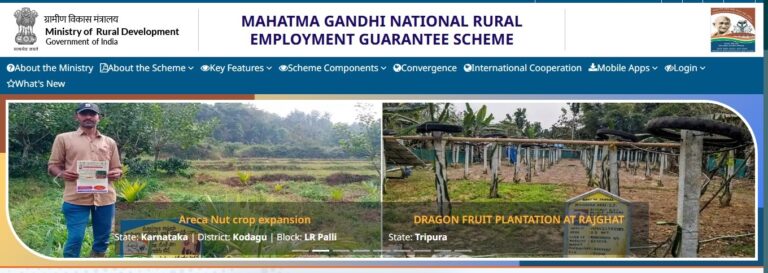
Schemes of Central Government in India: A Path Towards Inclusive Growth and Development
The central government of India has long been at the forefront of launching a variety of schemes to address the diverse socio-economic challenges faced by the country. These schemes cater to multiple sectors, including poverty alleviation, education, healthcare, financial inclusion, infrastructure development, and social welfare. The Indian government has continuously implemented such schemes to foster inclusive growth and ensure equitable development across all sections of society. Below, we explore some of the prominent central government schemes that have had a significant impact on the lives of citizens in India.
Click Here to Get more information and check eligibility for Upcoming Schemes
1. Pradhan Mantri Jan Dhan Yojana (PMJDY)
Launched in 2014, PMJDY is one of the most successful initiatives in the country, aiming to promote financial inclusion. The scheme provides access to banking facilities for every household, especially those in rural and remote areas where banking services were limited. It enables people to open zero-balance savings accounts, access overdraft facilities, and avail themselves of other banking services. The scheme also helps in direct benefit transfers (DBT), making subsidy transfers more efficient and transparent. As of now, millions of accounts have been opened, contributing significantly to the financial empowerment of India’s underserved population.
2. Pradhan Mantri Awas Yojana (PMAY)
PMAY, launched in 2015, aims to provide affordable housing to the homeless and those living in substandard housing conditions. The scheme is designed to build 20 million affordable houses by 2022 for economically weaker sections (EWS), lower-income groups (LIG), and middle-income groups (MIG) in both urban and rural areas. By providing financial assistance for the construction or purchase of homes, PMAY ensures that the dream of owning a house is within reach for millions of families in India. It also focuses on improving the quality of living by promoting the construction of durable and environmentally sustainable houses.
3. Swachh Bharat Abhiyan
The Swachh Bharat Abhiyan (Clean India Mission), launched in 2014, is a national cleanliness campaign aimed at improving sanitation and hygiene across India. The primary objectives of this initiative include the elimination of open defecation, improving solid waste management, and promoting sanitation facilities. Under this scheme, the government has constructed millions of toilets, particularly in rural areas, to improve sanitation and reduce the risk of diseases caused by poor hygiene practices. The mission also encourages individuals, schools, and communities to participate in cleanliness drives, making sanitation a national priority.
4. Ayushman Bharat Yojana
Ayushman Bharat is the world’s largest government-funded healthcare scheme, launched in 2018, which provides health insurance to the economically disadvantaged population. The scheme, also known as the Pradhan Mantri Jan Arogya Yojana (PMJAY), aims to provide free healthcare services to over 100 million families, covering more than 500 million people. Beneficiaries are provided with coverage of up to ₹5 lakh per family per year for secondary and tertiary healthcare. This ambitious initiative is revolutionizing access to healthcare services for the poor and ensuring financial protection against health-related expenses.

5. Atal Pension Yojana (APY)
The Atal Pension Yojana was launched in 2015 to address the issue of inadequate pension coverage for individuals working in the unorganized sector. This scheme targets low-income workers who do not have access to formal pension schemes and provides them with a fixed monthly pension after retirement. The government contributes to the pension fund of subscribers who are in the low-income bracket. This ensures that even the poorest sections of society can enjoy financial security in their old age.
6. Startup India
Launched in 2016, the Startup India initiative aims to promote entrepreneurship and encourage innovation across the country. The scheme provides a range of incentives, including tax exemptions, easier compliance regulations, and access to funding. It encourages the establishment of new businesses, especially in the fields of technology, manufacturing, and social entrepreneurship. The scheme is designed to boost the Indian economy, create jobs, and promote a culture of innovation and self-employment.
7. Make in India
In 2014, the Make in India initiative was launched with the goal of transforming India into a global manufacturing hub. The program seeks to attract both domestic and foreign investments, improve the ease of doing business, and encourage the growth of key industries such as electronics, automotive, textiles, and defense manufacturing. By boosting the manufacturing sector, Make in India aims to create millions of jobs and increase India’s share in global industrial output.
8. Skill India Mission
The Skill India initiative was launched in 2015 to provide youth with the skills necessary to meet the demands of the rapidly changing job market. The program focuses on offering vocational training to the youth in various sectors such as construction, manufacturing, and services. The goal is to train 40 crore individuals by 2022, equipping them with the skills needed for employment and entrepreneurship. The scheme plays a crucial role in addressing the issue of unemployment and improving the employability of India’s workforce.
9. National Social Assistance Programme (NSAP)
The NSAP is an essential social security scheme aimed at providing financial assistance to elderly citizens, widows, and disabled persons in the form of monthly pensions. Launched in 1995, the program seeks to ensure a minimum standard of living for vulnerable sections of society, offering them financial security when they are unable to earn a livelihood. The scheme is particularly beneficial for those who do not have access to other forms of social insurance.
10. Mahatma Gandhi National Rural Employment Guarantee Act (MGNREGA)
The MGNREGA, launched in 2005, is one of the largest employment programs in the world. The scheme guarantees at least 100 days of wage employment to rural households whose adult members volunteer to do unskilled manual labor. The main objective is to provide employment during lean agricultural seasons and create rural infrastructure such as roads, canals, and water conservation structures. MGNREGA has not only helped in alleviating rural poverty but also in empowering women and ensuring inclusive development.
Conclusion
The central government schemes in India play a pivotal role in the country’s efforts to achieve sustainable development and social justice. These schemes aim to uplift marginalized communities, create job opportunities, improve healthcare and education, and promote financial inclusion. The government’s focus on poverty alleviation, rural development, and social welfare is crucial for addressing the challenges of a rapidly growing population. While there are still challenges in the implementation and outreach of some schemes, the continued evolution of these programs holds immense potential for transforming India into a more equitable and prosperous society.

